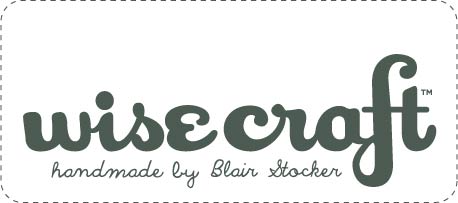Ruby Ambassador Sharon Holland
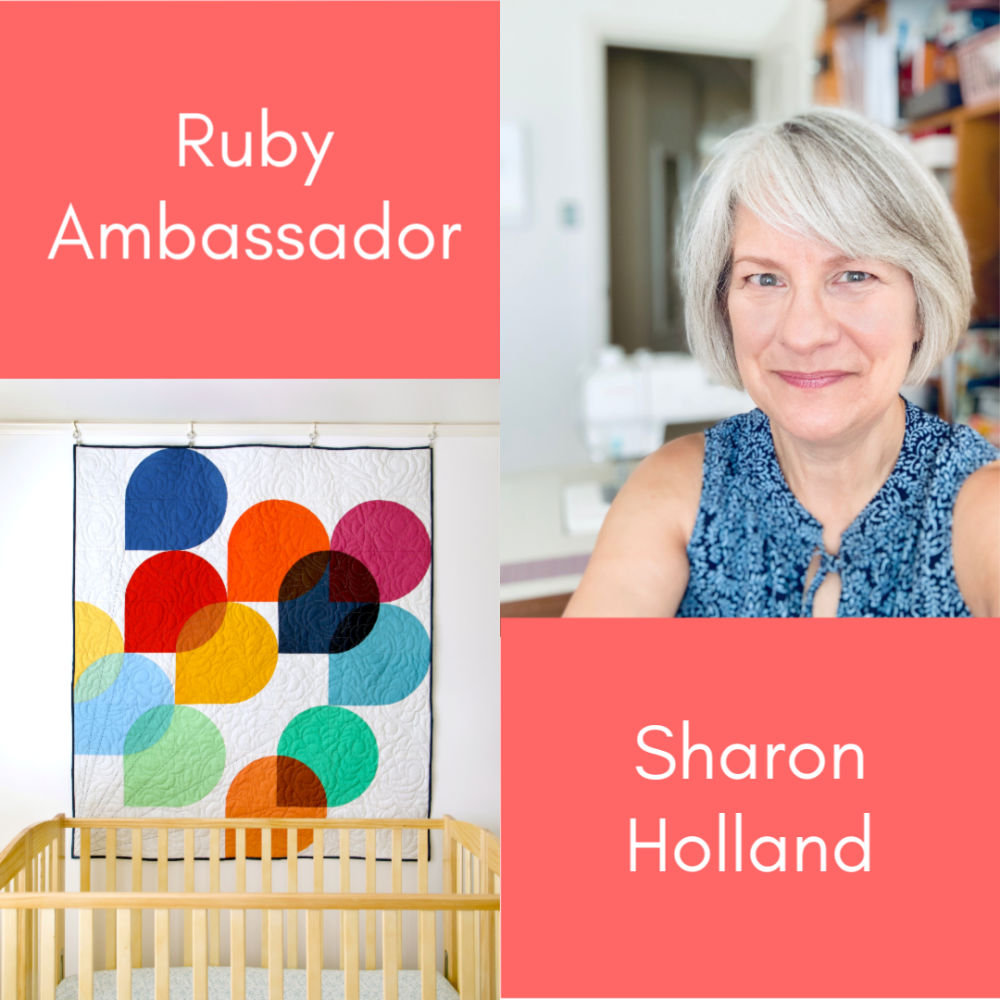
Happy Monday everyone! I am super excited to announce ambassador in the Ruby Ruler™ Ambassador series, Sharon Holland!
Sharon is a talented painter, illustrator, and other artist pursuits of all kinds. She is currently a popular designer with Art Gallery Fabrics and has designed many beautiful fabrics for them since 2014. You may remember the Stepping Stones quilt I made using her Bountiful fabric collection. She weaves a rich narrative of inspiration through each her collections. When you see one of her prints, you know it’s hers by the soft but complex colorings and hand rendered details. Her newest collection, Spirited, will launch in November 2019-
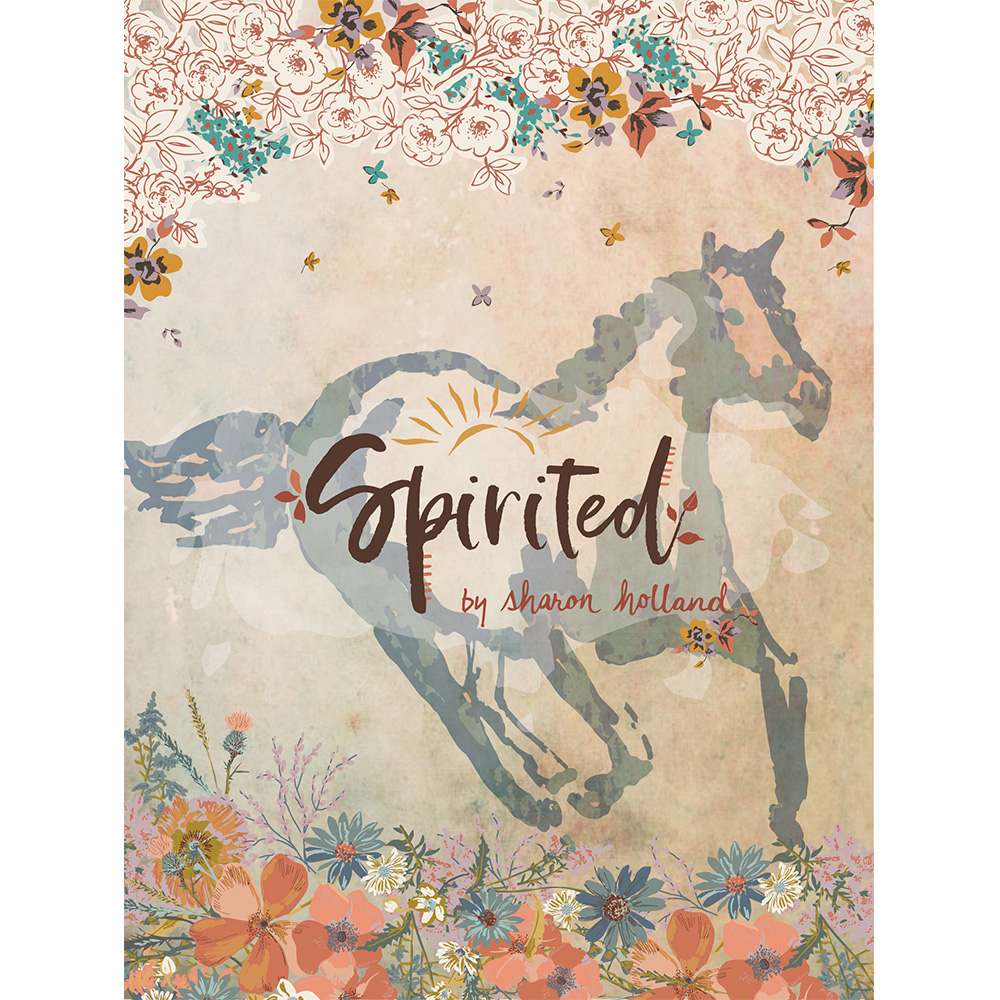
Sharon also has a beautiful book of quilt projects, called *Utility-Style, Quilts for Everyday Living, which is available now.
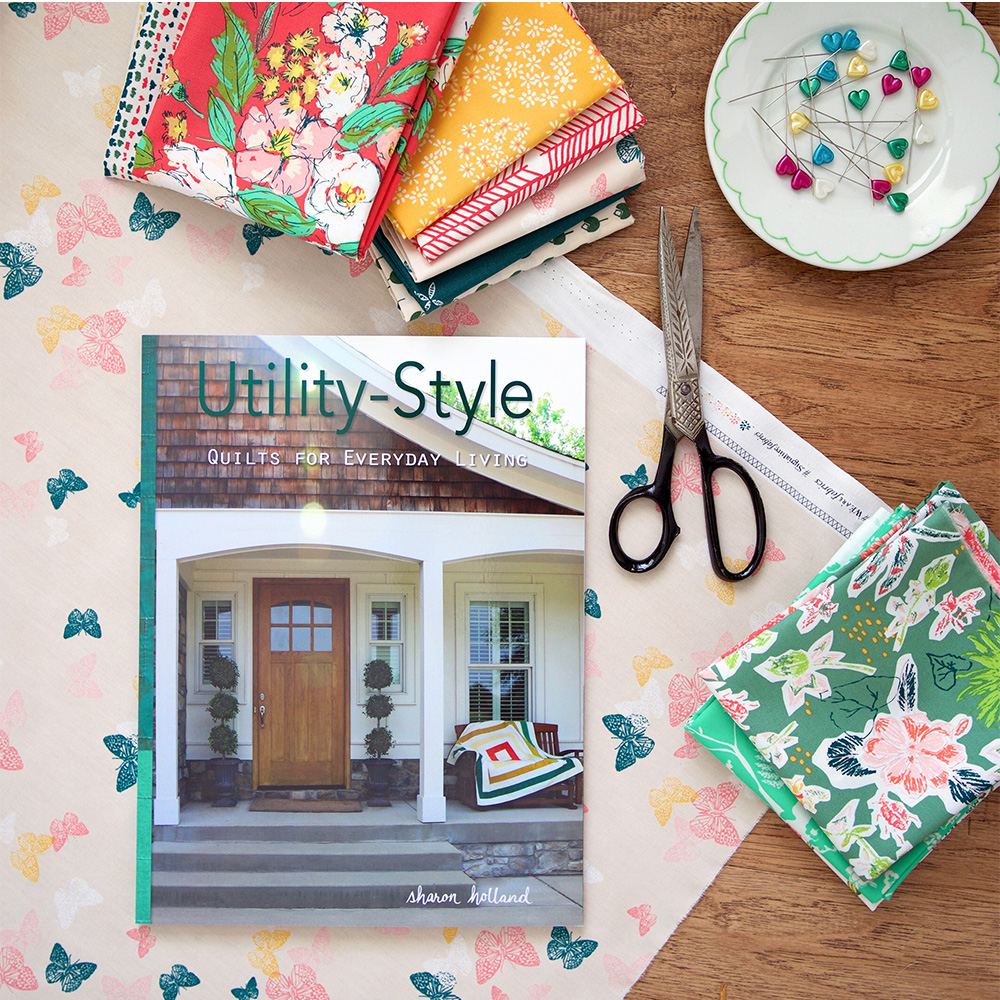
She has been using the Ruby Minder™ and Ruby Ruler™ as color value lenses recently, playing with how they can help her see values. I asked her a few questions about her process and her creative business. Enjoy!
My interview with Sharon Holland
Name and location: Sharon Holland, Ohio
Blair: How long have you been doing what you do (designing fabric, art, quilting, embroidery, etc) (a pic of you here would be great)?
Sharon: Here is a little background for you. I am a Midwest girl, born in Iowa. I graduated from Iowa State University with a B.A. in Art and Design. Lots of life happened in between graduating and actually putting my art out into the world so long story, condensed I got into the quilting industry in 2010.
Since my twenties I’d been sewing and had a passion for quilts because I could play with all the pretty printed fabrics. I really got into sewing after I was married and raising a family. I was fortunate to be a stay-at-home mom, sewing, painting, and crafting all while raising the kids.
In my early 40s we moved to where we now live in Ohio and I went back to school to learn Desktop Publishing and Digital Print. It was from there, armed with knowledge of Adobe Suite programs that I taught myself surface pattern design. This was before there was a lot of tutorials and courses widely available so self teaching at that time was really, self teaching. I never imagined I could/would actually be a fabric designer until I had this new skill set and confidence.
Anyway, the results of past experiences and going back to school to learn modern technology can now be seen today in the form of four fabric lines with Paintbrush Studios (my first fabric company I designed for), two and a half years as an Assistant editor, Graphic Designer, and Photographer for a quilting and sewing magazine, and currently a fabric designer for Art Gallery Fabrics with my eighth fabric line “Spirited” coming out this November.
Blair: Do you have a dedicated studio space or in your house, as space requires?
Sharon: I have two spaces. For my office work, designing, and painting I work in the dining room turned into an office. I have designated work stations and lots of southern light from a large window. A well lit area is a must for me and I’m way more creative on a sunny day than a gloomy one. I keep my decor very neutral so I’m not distracted/influenced by a lot of clutter or colors–a blank canvas, so to speak.
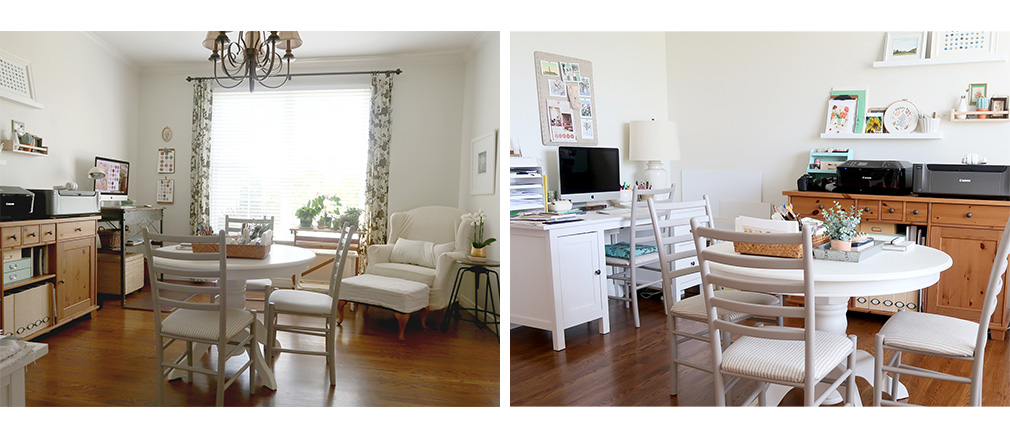
My sewing room/photography studio is in the upper bedroom right above the dining room and has the exact large, southern-facing window for lots of light. This room also doubles as a guest room and nursery for the grandkids when they visit. Last year I had the carpet removed from that room and installed hardwood flooring for easy clean up and beautiful photography backdrops. One of my best ideas to date was to install a picture rail molding around the perimeter of the room right below the ceiling (it looks like a skinning crown molding). Using hooks/clips and clear wire hangers I can quickly and easily move props for styling or put up my design wall or a quilt without damaging the walls. The minimal furnishings are on sliders so I can push or remove the furniture and set up a photography studio for styling.
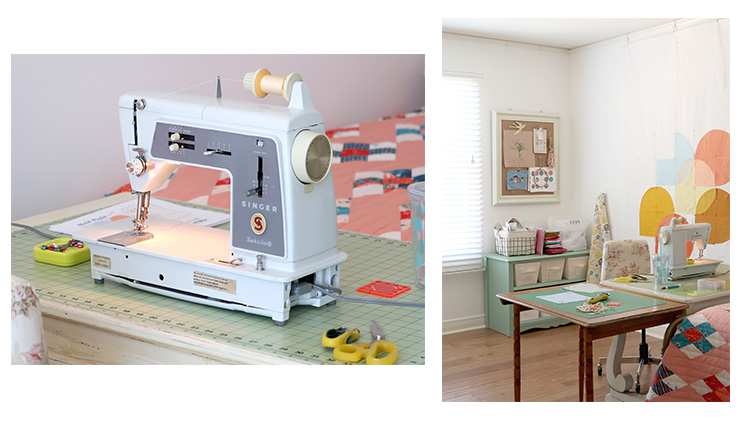
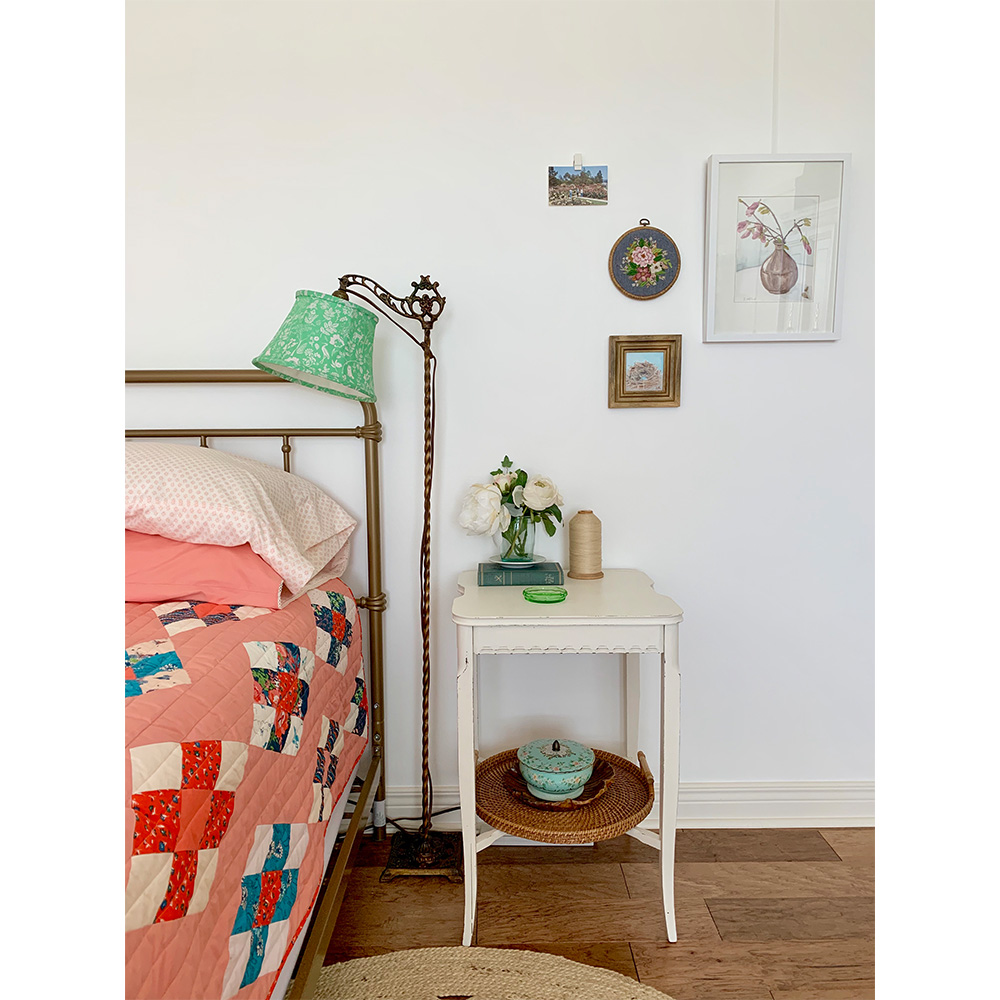
Blair: Can you share tips for storing fabric in your space? By color? By project?
Sharon: I store my print and solid fabrics on shelves, bins, baskets, and drawers–basically anywhere I can stash it. It’s separated by manufacturer and type (print or solid): Art Gallery Fabrics, vintage fabrics, and miscellaneous modern fabrics. I’m afraid I’ve never had a beautiful display-type of sewing room. It’s very functional and uncluttered. I try to keep my fabrics from being exposed to sunlight and the only things out are the fabrics and supplies I’m working with for a given project. My workspace is cleared off and fresh after each project.
Blair: It can be overwhelming to choose fabric and embroidery thread colors for our projects. How do you approach choosing fabrics for your projects? Do you exclusively use your own fabrics? Do you mix others with them?
Sharon: The first way I reduce the infinite amount of choices is to consider the subject matter. I think about the mood I want the piece to convey and possibly it’s application or audience as well. Is it a decorator piece? Then would benefit from a reduced color palette. Or does it need to be more graphic and have some pop?
After that initial questioning, I think about the actual color story. Generally I stick to about three colors—two main colors with the third being used sparingly, as an accent. Then I select shades and tints (steps) within those colors (hues) to keep harmony and balance. Many times I will draw inspiration from nature or from a beautiful image(s) found on Pinterest.
As for what type of fabrics I sew with, it’s 95% Art Gallery Fabrics. For the quilts in my book I used a mix of contemporary fabrics and vintage fabric–even repurposing cotton prints from vintage garments. But, for my sewing and promotion I use Art Gallery Fabrics exclusively, supplementing with textural material substrates like cork, etc. Mostly I sew with my own fabric collections to promote my work but will also do sewing projects to help promote other AGF designers.
Blair: Folks get confused about exactly how and why to use color value in their own work. Can you explain its importance in your work? Any tips on how you would initially approach it in a new project? Does value HAVE to come into play in a quilt design? Is using different colors enough? What do you think?
Sharon: A: Value plays a major role in everything from quilt design, painting, pattern design, needlework, decorating, etc. Without value, shapes and design elements would get lost. Value changes or steps add depth and define areas–keeping everything from looking flat. Mastering value is an important artistic skill and the Ruby Minder™ and Ruler can help one “see” value and intensity changes.
Blair: Can you share any general tip(s) for working with color value?
Sharon: Some projects (like painting) require very smooth or gradual steps in value changes and others, a more noticeable difference–so it does depend upon the application. For the majority of my work I like to have around two steps (higher or lower) in value change between colors. That means that colors that touch, whether they’re in the same hue or different hues there’s enough of a shade (black added) or tint (white added) that if all the shades and tints where laid in descending or ascending order you could remove one step between two swatches and there’d be a noticable difference between the two remaining on either side. The more steps taken out between swatches–the bigger the value difference or contrast. The less steps between swatches lowers the contrast and makes values blend.
Blair: How has the Ruby Minder™ helped you make color value decisions? (Any tips you may have gained as you used it will be great.)
Sharon: I tend to work intuitively but since using the Ruby Minder™ I’ve felt confident about my color choices because I could double check my selections and see how they read or come across visually.
My husband is color blind and because of that I’ve become a thoughtful designer about how everyone sees colors and how as we age our eyes change as well. I asked my husband to view some fabric pulls through the Ruby Minder and it made some of the colors pop out more to him that he wouldn’t have been able to see without it. Again, it’s a helpful tool for checking your work and seeing how universal your color and value selections will be.
Blair: What new things do you have happening this month and beyond?
Sharon: This month I will be collaborating with you to present a Sew Along for my Hold Tight Quilt pattern. This is the second sew along for this pattern but this time the focus will be more on selecting color and value within the framework of a petite version of the Hold Tight quilt (Here are the videos from the original SAL.) It will be a fun SAL with new finishing techniques and prizes in a workshop experience. (Keep reading for more information!)
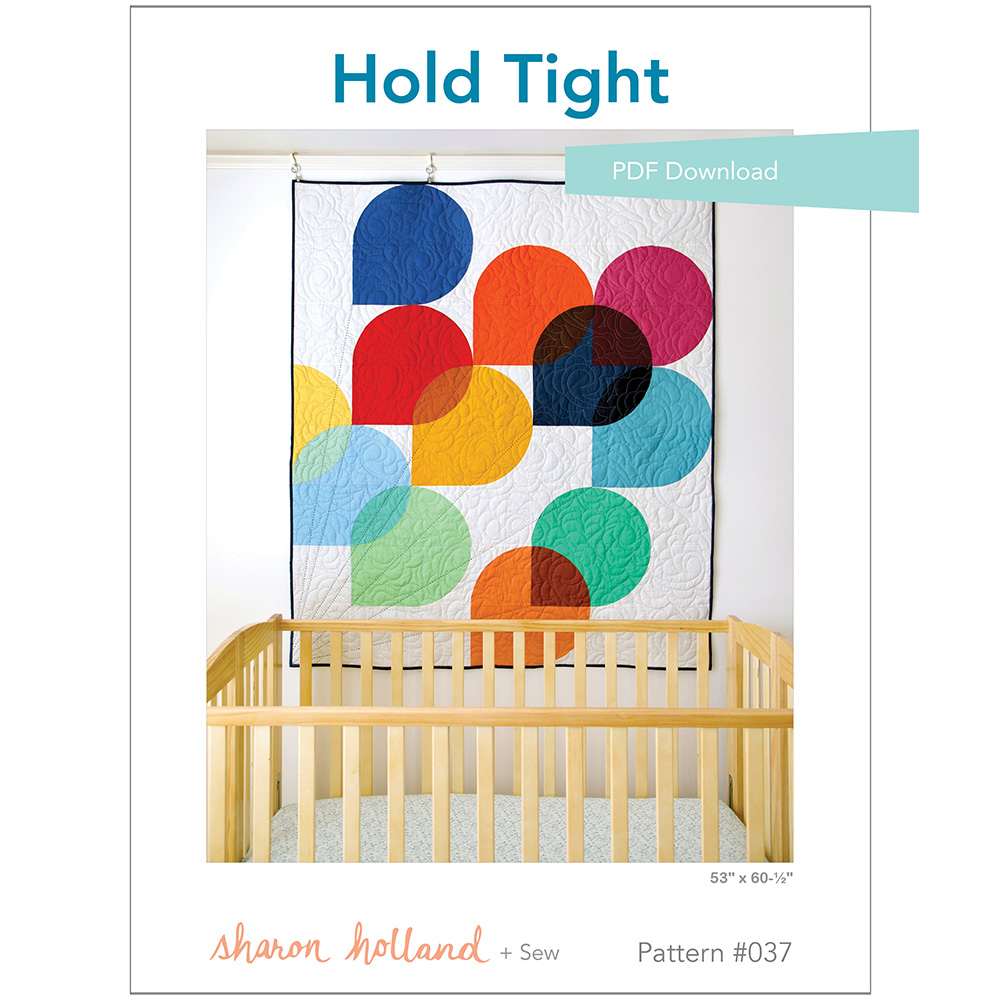
Hold Tight PDF quilt pattern
My next fabric line for Art Gallery Fabrics is called Spirited and will be available in November. Be watching in October for posts and new projects of Spirited fabrics!
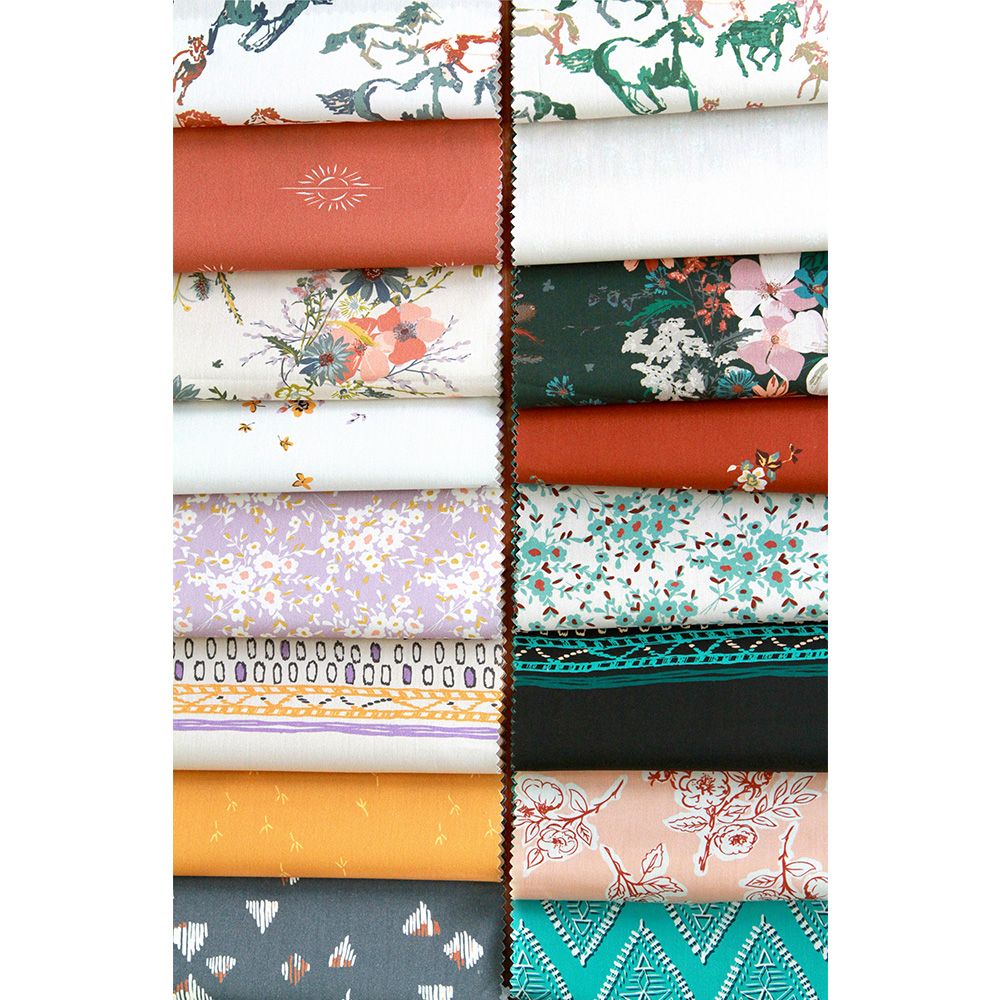
Blair: What’s your favorite quilt block?
Sharon: I really love so many, but if I had to pick just one, it would have to be the Log Cabin block and all its variations.
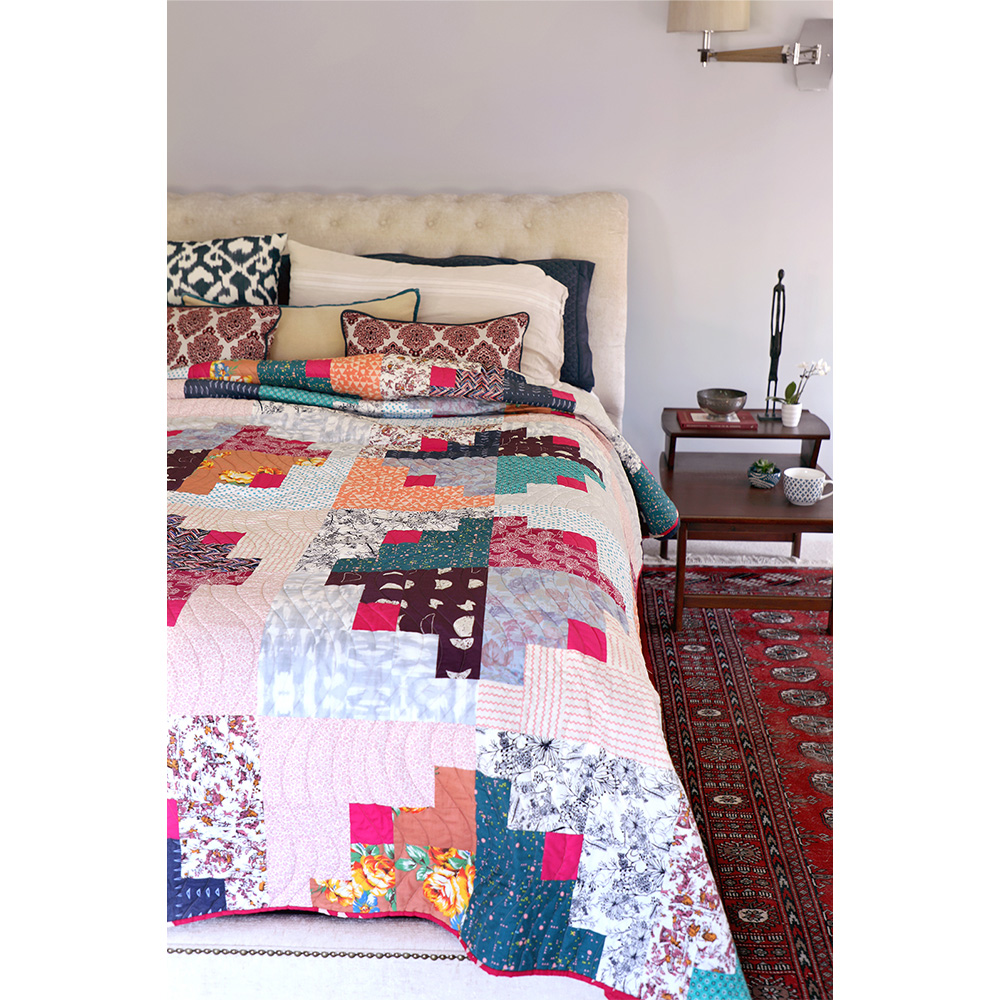
How to participate in the
🎈Hold Tight 🎈
Sewalong
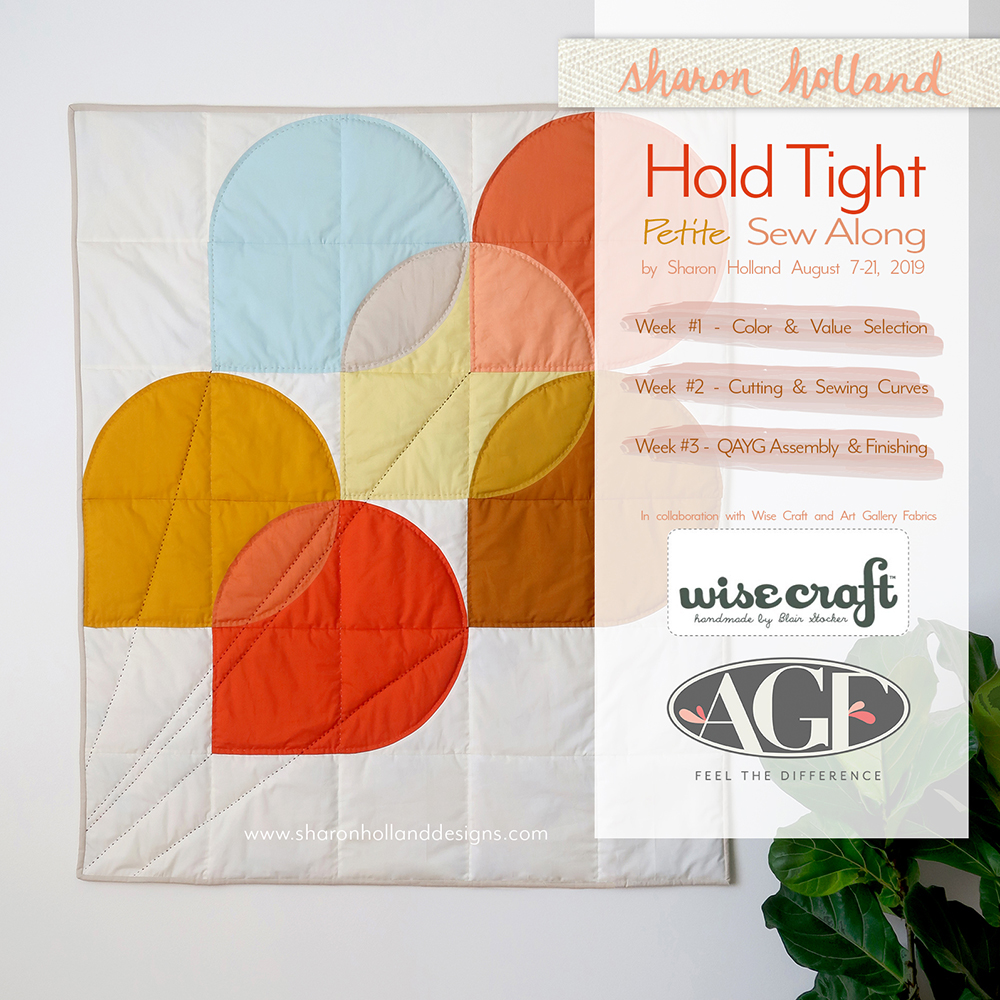
It is free to participate and join in the giveaways, but you’ll need the PDF pattern to get the instructions for the quilt. We will be showing how to use the Ruby Minder™ and the Ruby Ruler™ to make key value decisions for the balloon shapes. These are optional tools, but having one of them is helpful for judging areas where the values are most important.
Be sure to follow both Sharon and myself on Instagram! We will be announcing some fun giveaways over there! (You may also want to turn notifications on for our posts so that you’ll know when we announce the winners.)
Sharon will post each Wednesday for the next 3 weeks as she constructs the quilt, discussing a different part of the construction process.
Get inspired #holdtightquilt
Where can people find you online?
Website: Sharon Holland Designs
Instagram: @sharonhollanddesigns
Sharon Holland Art Gallery Fabrics
Utility-Style Quilts for Everyday Living
*This is an affiliate link. Purchasing through the link provided, will result in a small commission to me, but your price remains unchanged.
